![]()
Tue, june 01, 2010 | Sources: eretzyisroel.org by Mr. Hayim V. Habousha, wikipedia and frontpagemag by Abraham H. Miller.
Remembering the Farhud – the Mufti Inspired Krystallnacht in Iraq
Today marks the 69th anniversary of the Farhud 1 (which is Arabic for “pogrom”, “violent dispossession”).2 The entire [Jewish] world has heard of Krystallnacht. Yet very few have even heard of the Farhud, where Nazi sympathizers in Baghdad, killed, maimed and committed numerous atrocities aginst the Jewish population on the two days of Shabu’oth in 1941 [sunday, june 01 and monday, june 02, 1941] 3 In its wake, the Farhud left some 200 dead, 2000 injured, and 900 Jewish homes destroyed. It was the beginning of the end of the Jewish community of Iraq, a community that had existed for twenty-six centuries, preceded Islam by a thousand years, and once numbered over 125,000 souls.4
Jews lived in Babylonia (modern Iraq) for over 2,400 years, since the destruction of the first Beth Hamiqdash. Jews lived mainly in Baghdad and, in 1870, started moving to other towns such as Amarah, Ali Agharbi, Qalaat Salih and Basrah. The development of Basrah which started to flourish again after the opening of the Suez Canal, adversely affected Aleppo in Syria and northern Iraq. The fact that the majority of the Jewish community was concentrated in Baghdad explains why the Baghdadi Jews bore the brunt of the Farhud.5
Some reasons for the Farhud:
Political – under British occupation (1914/1918–1922) Jews gained confidence, felt secure and did not tolerate any mockery or physical abuse. Some went as far as to proclaim themselves British citizens or proteges — this was strongly resented by the Moslems. Economic – Jews were very active in all trade and finance fields — at the same time they were a sizable percentage of the civil service staff. On August 27, 1934 numerous Jews were dismissed by Arshad Alumari, Minister of Economics and Communication, and an unofficial quota was set up for Jews to be appointed in the civil service and for Jews to be admitted into secondary schools and colleges. Hatred of the Jews – stirred by several organizations headed by such prominent officials as Dr. Fadil Al Jamali (Inspector General of the Ministry of Education), Dr. Saib Showkat (Director of Baghdad Central State Hospital), General Taha Al Hashimi (Chief of Staff ), General Salah Aldin Al Sabbagh. The Palestinians Fawzi Al-Qauqji Darwish Al Miqdadi, Mufti Haj Amin Al Husseini together with the Syrians Farid Zayn Ad-Din and Dr. Amin Ruwayha were also very active in these organizations.
The driving force behind this anti-British, anti-Jewish, anti-Zionist movement was the German embassy in Baghdad headed by Dr F. Grobba which generously supplied money, books and film.6
Propaganda
Between 1932 and 1941, the German embassy in Iraq, headed by Dr. Fritz Grobba, significantly supported antisemitic and fascist movements. Intellectuals and army officers were invited to Germany as guests of the Nazi party, and antisemitic material was published in the newspapers. The German embassy purchased the newspaper Al-alam Al-arabi (“The Arab world”) which published, in addition to antisemitic propaganda, a translation of Mein Kampf in Arabic. The German embassy also supported the establishment of Al-Fatwa, a youth organization based upon the model of the Hitler Youth.
The Golden Square coup
Michael Eppel, in his book “The Palestinian Conflict in Modern Iraq” blames the Farhud on the influence of German ideology on the Iraqi people, as well as extreme nationalism, both of which were heightened by the Golden Square coup:
In 1941, a group of pro-Nazi Iraqi officers, known as the “Golden Square” and led by General Rashid Ali, overthrew Regent Abdul Ilah on April 1 after staging a successful coup. Iraq’s new government then was quickly involved in confrontation with the British over the terms of the military treaty forced on Iraq at independence. The treaty gave the British unlimited rights to base troops in Iraq and transit troops through Iraq. The British arranged to land large numbers of soldiers from India in Iraq to force the country to show its intentions. Iraq refused to let them land and confrontations afterward occurred both near Basra in the south and to the west of Baghdad near the British base complex and airfield. The Germans dispatched a group of 26 heavy fighters to aid in a futile air attack on the British airbase at Habbaniya which accomplished nothing.
Winston Churchill sent a telegram to President Franklin D. Roosevelt, warning him that if the Middle East fell to Germany, victory against the Nazis would be a “hard, long and bleak proposition” given that Hitler would have access to the oil reserves there. The telegram dealt with the larger issues of war in the middle east rather than Iraq exclusively.
On May 25, Hitler issued his Order 30, stepping up German offensive operations:
“The Arab Freedom Movement in the Middle East is our natural ally against England. In this connection special importance is attached to the liberation of Iraq… I have therefore decided to move forward in the Middle East by supporting Iraq.”
On May 30, the British-organized force called Kingcol led by Brigadier J.J. Kingstone reached Baghdad, causing the “Golden Square” and their supporters to escape via Iran to Germany. Kingcol included some elements of the Arab Legion led by Major John Bagot Glubb known as Glubb Pasha.
On May 31, Regent Illah prepared to fly back into Baghdad to reclaim his leadership. To avoid the reality of a British-organized countercoup, the regent entered Baghdad without a British escort.
Antisemitic actions preceding the Farhud
Sami Michael, a witness to the Farhud, testified:
“Antisemite propaganda was broadcast routinely by the local radio and Radio Berlin in Arabic. Various anti-Jewish slogans were written on walls on the way to school, such as “Hitler was killing the Jewish germs”. Shops owned by Muslims had ‘Muslim’ written on them, so they would not be damaged in the case of anti-Jewish riots.”
Shalom Darwish, the secretary of the Jewish community in Baghdad, testified that several days before the Farhud, the homes of Jews were marked with a red palm print (“Hamsa”), by al-Futuwa youth.
Two days before the Farhud, Younis Sabawi, a government minister that proclaimed himself the governor of Baghdad, summoned Rabbi Sasson Khduri, the community leader, and recommended to him that Jews stay in their homes for the next three days as a protective measure. An investigative committee later found that Younis had the intent of killing the Jews, although his rule of Baghdad lasted only a few hours, to be seized by a public security committee.
During the fall of the Rashid Ali government, false rumors were circulated that Jews used mirrors to signal the British airforce.7
Leading up to the Farhud.
April 1, 1941 – The Royal palace in Baghdad was surrounded by the army. The regent and his entourage escaped to Habbaniyeh, from there to Basrah and thence to Amman in Transjordan. April 3, 1941 Nazi sympathizer Rashid Ali Al Gaylani and four generals led a military coup, deposed the absent regent and were the real rulers of Iraq with the pro–Nazi junta.
At once hoodlums and students demonstrated in the streets against the British and the Jews. Looting of property and beating up of Jews took place in Baghdad, Mosul, Kirkuk, Irbil, Basrah, Amara and Fallujah. The killing of Jews took place in Baghdad alone.
May 30, 1941 – Yunis Al Sabawi, head of Nazi groups, declared himself governor of central southern Iraq. He ordered Jews through Hakham Sasson Khedouri, to remain in their homes Saturday, May 31, and on June 1 and 2—Shabu’oth. He had the intention of slaughtering the Jews that weekend using the Nazi youth organizations he was heading. However, miraculously, Sabawi was deported to the Iranian border that same day.
May 31,1941 – It was announced that the Regent with his entourage would be returning to Baghdad next day.
The Farhud.
June 1, ’41, the first day of Shabu’oth – A delegation of Jews went to the airport to welcome the Regent. On their way back they were attacked on Al Khurr bridge by soldiers and civilians. One Jew was killed, and many injured who were taken to the hospital. There were attacks and killings in Al Rusafa and Abu Sifyan; terror continued until 10 p.m. ; Jews were killed randomly, hundreds were injured, women and children were raped in front of their relatives, babies crushed, houses set on fire, looting… and so on.
June 2,1941 – Policemen, soldiers and slum dwellers from Al Karkh entered the scene, and participated in the killing and the looting everywhere. At 5 p.m., curfew was declared and anyone who showed himself in the streets was shot on the spot. Reports vary—official Iraqi reports mention 187 killed, others say as many as one thousand, but it seems likely that about 400 innocents were killed with numerous wounded. It would be inappropriate, however, not to mention some humanitarian acts carried out by some Iraqis.
Many Moslems opened their homes and fed and protected the Jews. It had been reported that some Moslems apologized for not being able to provide Kasher meat and/or poultry to their guests. Looters in Basrah on May 1941, were stopped by a distinguished Moslem notable, Salih Bashayan, who appointed guards from his own men to protect Jewish property On June 1, 1941 pressed by the mob to oust the injured Jews from the hospital where they were treated, Jamil Dallali, the director, called the police who dispersed the hostile crowd. On June 1, 1941 Dr. Saib Showkat, Dean of the Baghdad Medical College, chief of surgery and administrator of Baghdad Central Hospital entered the surgery ward and scrubbed his hands getting ready to operate. Doctors and nurses standing idly by, had no option but to follow his example. In a few hours, all patients (mostly Jews) were attended to and moved into clean beds. When Jewish nurses reported threats of rape by Iraqi wounded officers being treated at the hospital, Dr. Showkat sent the officers to their beds and warned on the megaphone that anyone disobeying his order would be shot by him with two guns in his belt. There was no argument—everyone obeyed.
On June 2nd, Jewish patients were transferred to Mir Elias hospital where Jewish doctors acknowledged that the treatment provided had been highly professional. But many questions will remain, including why the British, who were on the outskirts of the city and were in a position to stop the massacre, stood by and did nothing. Some papers which might shed some light on the matter are to be kept closed by the British till 2017.8
Remembering the Farhud – frontpagemag.
Today, not a single Jew is left in Iraq. Arab apologists trace the dismantling of the Jewish communities of the Arab world (Mizrachim) and of North Africa (Sephardim) to anti-Jewish sentiment growing out of the creation of Israel. Implicit in this is the imposition of collective responsibility, as if the Jews of the Arab world and North Africa were directly responsible for whatever Israeli Jews did or did not do.
Although the Arab and Muslim communities in America and the West publicly cry foul when the terrorist attacks of September 11 are linked to them or their religion, they do not hesitate to ascribe collective responsibility to Jews. For instance, writing in the interfaith newsletter in Contra Costa County, California, Dr. Amir Araim, the Imam of Concord, California, and an Iraqi who once represented Saddam Hussein’s regime to the United Nations, links the dismantling of the Jewish community of Iraq directly to the controversial events at Deir Yassin, the Arab village that was captured by Israel during the Arab-Israeli war of 1948 and where pro-Arab propagandists have long claimed a “massacre” took place.
Even leaving aside that highly contestable claim, Araim’s allegation that there is a direct line running from Deir Yassin to the Farhud in Baghdad is woefully ahistorical: the pogrom occurred long before there was an Israel or even a single Palestinian refugee. The Farud began at 3 PM on June 1, 1941, the Jewish holy day of Shavout. The violence erupted when a pro-Nazi mob attacked representatives of the Jewish community as they crossed Baghdad’s Al Khurr Bridge to greet the returning Iraqi Regent Abdul-al Ilah. The mob then murdered, burned and raped its way through the Jewish community. Jewish infants were special targets, killed as helpless parents looked on. The superintendent of police refused to stop the riots. He was not about to kill or injure Muslims to save Jews.
The Farhud is doubly embarrassing for Arab apologists. First, it resurrects the problem of the nearly one million Jewish refugees from the Middle East and North Africa. In contrast to Palestinian Arab refugees, they received no recognition from the United Nations and no assistance outside of the Jewish community and the State of Israel. Instead of languishing for four generations in refugee camps, like the Palestinian refugees, within a few years they became both contributing members and citizens of Israel and Western societies.
Second, the Farhud was a Nazi riot. The Farhud was the result of the work of the Grand Mufti of Jerusalem Haj Amin el Husseini. The Mufti cut a deal with the Nazis to overthrow the British-sponsored government of Iraq and provide Hitler with Iraqi oil vital to Germany’s war efforts. In return, the Nazis would eliminate the “Jewish problem” in Mandate Palestine. In October of 1939, the Mufti came to Iraq to precipitate a coup that was to be led by Iraqi officers who embraced Nazism and were known as the “Golden Square.” As a unifying inspiration for the coup, the Mufti invoked Nazi propaganda themes of anti-Semitism focusing on the Jews as “enemies of the state.”
The coup failed. The Mufti fled Iraq to Berlin and the hospitality of SS Chief Henrich Himmler and later Hitler himself. Although the Nazis held the Arabs in only slightly higher esteem than they held Jews, the Nazis saw the Mufti as a useful ally against the British, and his anti-Semitic propaganda broadcasts in Arabic from Berlin further served mutual purposes. The Mufti’s legacy of anti-Semitism became part of Iraqi culture.
This is embarrassing because while Arab propagandists routinely use “Jew” and “Nazi” in the same breath, Nazism is historically very much a part of Arab political culture. In 1947, when the United Nations took up the question of the Palestine Mandate, Iraqis organized new pogroms and used Nazi confiscation techniques to seize Jewish property. Similarly, the Ba’ath socialists of Iraq and Syria draw their inspiration from Nazism. This further belies the Arab claim that anti-Semitism is exclusively a Western and not a Middle Eastern phenomenon.
The aftermath of the Farhud spelled the end of Iraq’s Jewish community. On September 23, 1948, Safiq Ades, Iraq’s wealthiest Jew was publicly hanged on phony charges and his property seized. His body swung in the public square in Basara where Iraqi celebrants mutilated it. A month later, all of Iraq’s Jews employed in the civil service were summarily fired. Iraq then set about systematically seizing Jewish assets and impoverishing its Jews. With a degree of almost unmatched cynicism, the Iraqi political oligarchy profited by requiring expelled Iraqi Jews to use Iraqi travel agents in order to flee to Israel. All the while, Iraq saw the imposition of 15,000 penniless Jews a month on the newly created Jewish state as a mechanism to defeat Israel by precipitating a major economic crisis. Indeed, Israel accepted these Jews at a time when there were not even enough tents or refugee camps to house them.
Iraqi Jews went to Israel and lived in refugee camps. So little is known about the plight of the Mizrachi and Sephardic Jewish refugees that even informed Jews are dumbfounded upon learning this. Yet, within the space of a few years, these refugees were absorbed into Israeli society. Unlike the Palestinian Arabs, they were not abandoned to languish without hope for generation after generation in impoverished camps.
Slowly but inevitably the truth about the one million Jewish refugees from Arab lands is coming to light. Remembering the Farhud is part of restoring the history of an oppressed and forgotten people, whose suffering and persecution have too long been ignored. Arabs and Muslims must ultimately take responsibility for the anti-Semitism of their world, a racism that resulted in Arab Jews becoming the largest ethnic group in Israel.9
Notes:
1 There had been at least two earlier pogroms in the history of Iraqi Jews, in Basra in 1776 and in Baghdad in 1828. There were many instances of violence against Jews during their long history in Iraq, as well as numerous enacted decrees ordering the destruction of synagogues in Iraq, and some forced conversion to Islam. Wikipedia.
2 Wikipedia.
3 eretzyisroel.org by Mr. Hayim V. Habousha.
4 frontpagemag by Abraham H. Miller.
5 eretzyisroel.org by Mr. Hayim V. Habousha.
6 eretzyisroel.org by Mr. Hayim V. Habousha.
7 Wikipedia.
8 eretzyisroel.org by Mr. Hayim V. Habousha.
9 frontpagemag by Abraham H. Miller.



 RSS
RSS

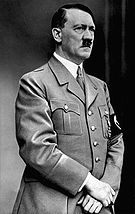



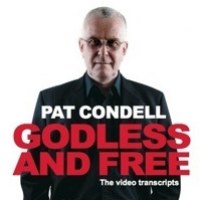
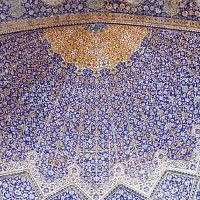

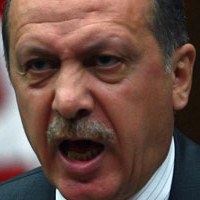
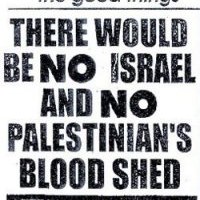




Remembering the Farhud, The Mufti inspired Krystallnacht – Islam and Nazism #israel #jews #jcot #holocaust #nazism #iraq http://j.mp/akrIsj
RT @CrethiPlethi: Remembering the Farhud, The Mufti inspired Krystallnacht – Islam and Nazism #israel #jews #jcot #holocaust #nazism #iraq http://j.mp/akrIsj
RT @CrethiPlethi: Remembering the Farhud, The Mufti inspired Krystallnacht – Islam and Nazism #israel #jews #jcot #holocaust #nazism #iraq http://j.mp/akrIsj
[…] This post was mentioned on Twitter by len futterman, Elisabeth. Elisabeth said: RT @CrethiPlethi: Remembering the Farhud, The Mufti inspired Krystallnacht – Islam and Nazism #israel #jews #jcot #holocaust #nazism #iraq http://j.mp/akrIsj […]